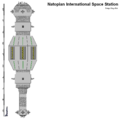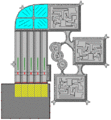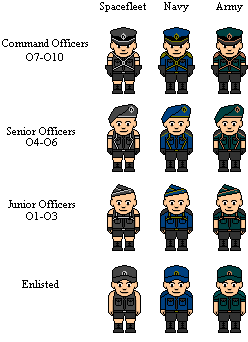Natopian Defense Force
| Natopian Defence Force | |
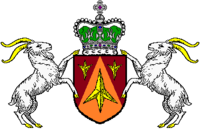 Coat of Arms of the Defense Force | |
| Country | Natopia |
|---|---|
| Founded | 1471 |
| Branches | Army, Navy, Spacefleet |
| Headquarters | Lindstrom |
| Leadership | |
| Grand Commander | Vadoma |
| Secretary for Defense | Royston IV Merrick |
| Manpower | |
| Military age | 18 |
| Active personnel |
|
| Reserve personnel |
|
| Expenditures | |
| Domestic suppliers | SATCo, Dingo Enterprises, and others |
| Foreign suppliers | ESB Group, and others |
The Natopian Defense Force is a combined arms force tasked, under the Caprine Code with defending the totality of Natopia's holdings on Micras and in the wider Atos system. It's motto is Duty, Loyalty, Honor. It is ultimately under the command of the Natopian Emperor, who has the supreme rank of Grand Commander of the Defense Force. Most operations and decisions are made by the Natopian Secretary for Defense.
Command hierarchy
- Court of the Verdant Gardens (CVG), headed by the Secretary of Defense
- Natopian Defense Force (NDF), commanded by the Chief of the General Staff of the NDF (OF-10)
- Service Branches, commanded by the Chief of Staff for the respective service branches (OF-10)
- Commands, under the Commander for the respective named commands (OF-9)
- Armies/Fleets/Forces, under the Commander for the respective named forces (OF-9)
- Corps/Divisions/Groups, under the Commander for the respective named formations (OF-8)
- Armies/Fleets/Forces, under the Commander for the respective named forces (OF-9)
- Commands, under the Commander for the respective named commands (OF-9)
- Service Branches, commanded by the Chief of Staff for the respective service branches (OF-10)
- Natopian Defense Force (NDF), commanded by the Chief of the General Staff of the NDF (OF-10)
Natopian Army
The equipment of the Natopian Army would be comprehensively overhauled in the wake of the Anders Defense Review of 1716. Critics would point to the absence of support vehicles and artillery systems during the deployment to Natopian forces to Eura during 1730 AN as evidence of failures in the procurement programmes of the Court of the Verdant Garden. In spite of this, the reorganisation of the Natopian Army proceeded apace between 1716 AN and 1740 AN, marking a complete overhaul of the traditional establishment, which had remained in place since the War of Lost Brothers in the mid seventeenth century after Norton.
Organisation of the Natopian Army
- Land Forces
- Home Command
- Corps of Artillery and Air Defence
- Corps of the Cavalry
- Corps of Engineers
- Corps of Infantry
- Operational Command
- Natopian Airmobile Rapid Reaction Force
- 1st Command & Control Regiment
- 11th Air Assault Brigade
- 12th Cavalry Regiment
- 16 Air Assault Brigade
- Airmobile Artillery Regiment
- Commissariat Regiment
- Inspectorate Regiment
- 600th Army
- I “Asara” Corps
- 17th Division
- 40th Mechanised Brigade
- 56th Motorised Brigade
- 2nd Regiment of Engineers
- 8th Regiment of Artillery
- 34th Division
- 17th Division
- II “Shapur” Corps
- 16th Division
- 77th Mountain Brigade
- 33rd Division
- 16th Division
- III “Rostam” Corps
- 15th Division
- 32nd Division
- IV “Dominus” Corps
- 14th Division
- 31st Division
- I “Asara” Corps
- Exercitus Arboriae (Eastern Arboria)
- V Corps
- 13th Division
- 30th Division
- IX Corps
- 12th Division
- 29th Division
- V Corps
- Exercitus Comitatenses (Northern Arboria)
- VI Corps
- 11th Division
- 28th Division
- X Corps
- 10th Division
- 27th Division
- VI Corps
- 224th Army (Western Arboria)
- VII Corps
- 9th Division
- 26th Division
- XI Corps
- 8th Division
- 25th Division
- VII Corps
- 225th Army (Florian Frontier)
- XIII Corps (Towards Dragonmoor)
- 7th Division
- 24th Division
- XIV Corps (Towards Oldhaven)
- 6th Division
- 23rd Division
- XIII Corps (Towards Dragonmoor)
- 226th Army (Fosvalos Frontier)
- XII Corps
- 5th Division
- 22nd Division
- XV Corps (Towards Misnir)
- 4th Division
- 21st Division
- XII Corps
- 227th Army (Blyth)
- VIII Corps
- 3rd Division
- 20th Division
- 4th Underground Combat Brigade
- VIII Corps
- NDF Garrison Cibola
- XXX Corps (Waffel Plains)
- 2nd Division
- 19th Division
- XXXI Corps (Baudrix)
- 1st Division
- 18th Division
- XXX Corps (Waffel Plains)
- Natopian Airmobile Rapid Reaction Force
- Commissariat of the Army
- Supply & Transport Directorate
- Strategic Mobility Command
- Treasury Directorate
- Construction and Engineering Directorate
- Medical Services Directorate
- Logistics and Sustainment Directorate
- Arsenals (Munitions)
- Barracks (Personnel)
- Depots (Stores)
- Corps Logistics Brigades
- Commissariat Purveyors & Field Officers
- Supply & Transport Directorate
- Inspectorate of the Army
- Training & Doctrine Directorate
- Adjutant-General's and Justiciary Directorate
- Standards & Compliance Directorate
- Force Protection Directorate
- Communications Security Directorate
- Demesne Defence Forces (Wartime only)
- Western Natopian Demesnial Forces
- Klaasiyan Elite Forces
- Dynastic Guard of Flaventia
- Home Command
Land Establishment
| Name | Origin | Type | № in Service | Image | Notes | |
|---|---|---|---|---|---|---|
| Main Battle Tanks and Heavy Armor | ||||||
| Lion AFV-1 | Main battle tank | 100 | 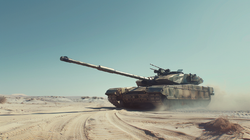 |
| ||
| Lion AFV-1A1 | Main battle tank | 745 |  |
| ||
| Lion AFV-2 | Advanced main battle tank | 1,400 | File:Lion2AdvancedBattleTank.png | |||
| MBT-1 Victor | Main battle tank | 360 | File:MBT-1Victor.png | |||
| Puma HAV | Heavy assault vehicle | 250 | File:PumaAssaultVehicle.png | |||
| Light Tanks and Reconnaissance Vehicles | ||||||
| BK-XII scout tank | Scout tank | 400 |  |
| ||
| AVCAV-1 Rimaq | Armed reconnaissance vehicle | 180 | 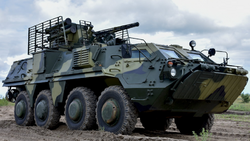 |
|||
| Ocelot AFV-3(Z) | Armored reconnaissance vehicle | 1,200 |  |
| ||
| Infantry Fighting Vehicles | ||||||
| Jaguar AFV-4(B) | Infantry fighting vehicle | 2,400 | 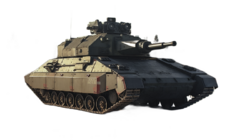 |
| ||
| IFV-3 Puma | Infantry fighting vehicle | 320 | 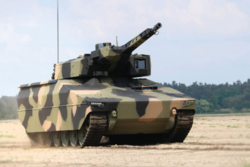 |
|||
| IFV-4 Amaru | Heavy infantry fighting vehicle | 120 | File:IFV-4Amaru.png | |||
| Armored Personnel Carriers | ||||||
| Cougar AFV-2(Z) | Armored personnel carrier | 7,500 |  |
| ||
| APC-5 Wamani | Wheeled armored personnel carrier | 450 | 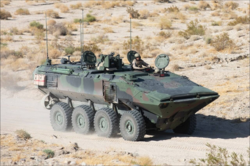 |
|||
| Rz.Kfz 1714 Razkampfwagen | Mine-Resistant Ambush Protected Vehicle | 7,950 |  |
| ||
| Serval LPV | Light protected mobility vehicle | 3,200 | File:ServalProtectedVehicle.png | |||
| Command and Specialized Vehicles | ||||||
| Lynx C2V | Command and control vehicle | 400 | File:LynxCommandVehicle.png | |||
| ARV-3 Tarpuy | Armored recovery vehicle | 180 | File:ARV-3Tarpuy.png | |||
| Wolverine ARV | Armored recovery vehicle | 300 | File:WolverineRecoveryVehicle.png | |||
| CEV-2 Amauta | Combat engineering vehicle | 90 | File:CEV-2Amauta.png | |||
| UGV-1 Chuncho | Unmanned ground vehicle | 240 | File:UGV-1Chuncho.png | |||
| Artillery and Missile Systems | ||||||
| Tempest AS-1 | Multiple rocket launch system | 540 | 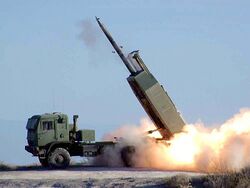 |
|||
| Tornado AS-2(B) | Towed artillery | 1,600 | 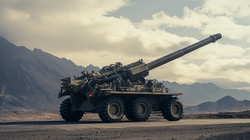 |
| ||
| Cyclone SPH | Self-propelled artillery | 480 | File:CycloneSelfPropelledHowitzer.png | |||
| SPH-4 Illapa | Self-propelled howitzer | 120 | File:SPH-4Illapa.png | |||
| Talon TMS | Medium-range tactical missile system | 36 | File:TalonMissileSystem.png | |||
| Air Defense Systems | ||||||
| AAMM | Short-range air defense system | 120 | 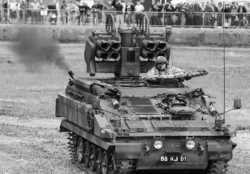 |
|||
| Athena | Short-range air defense system | 200 |  |
|||
| Sinchi Paña | Self-propelled anti-aircraft and anti-tank missile system | 160 | 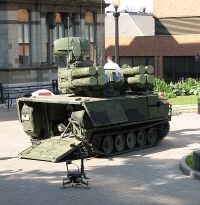 |
|||
| Peregrine | Medium-range mobile air defense system | 72 | File:PeregrineAirDefense.png | |||
| Vulcan Advanced Air Defense System | High-energy directed weapon system | 74 | 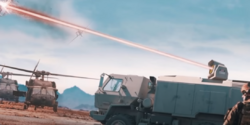 |
| ||
| Silver Hammer Air Defense System | Counter-rocket, artillery, and mortar system | 200 | File:SilverHammerSystem.png | |||
| JAV 135 Guardian | Surface-to-air missile system | 24 systems | File:JAV135Guardian.png | |||
| Sparrow LAAM | Man-portable air defense system | 7,200 | File:SparrowAntiAircraftMissile.png | |||
| Aerial Defense Sentinel Swarm | Counter-drone defense system | 18 | File:AerialDefenseSentinelSwarm.png |
| ||
| Purple Shield Air Defense System | Integrated air defense platform | 12 | File:PurpleShieldSystem.png | |||
| Cerberus Dome | Close-in weapon system | 48 | File:CerberusDome.png | |||
| Support Vehicles and Logistics | ||||||
| Ahvaz Engineering Support Vehicle | Combat engineering vehicle | 1,500 | 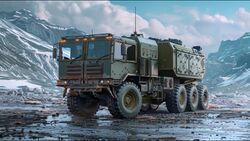 |
| ||
| Ahvaz Land Cruiser | All-terrain utility vehicle | 40,000 |  |
| ||
| Ahvaz Modular Cargo Transporter | Utility transport | 80,000 |  |
| ||
| Ahvaz Vehicle Transporter | Vehicle transport | 2,800 | 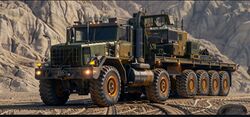 |
| ||
| BK-VIII Light Infantry Scout Vehicle | Scout carrier | 120,000 | 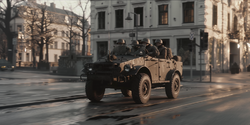 |
| ||
| AVLB-1 | Armored vehicle-launched bridge | 60 | File:AVLB-1.png | |||
| Hydra Bridge Layer | Bridge layer | 40 | File:HydraBridgeLayer.png | |||
| Infantry Equipment and Weaponry | ||||||
| M1693 medium machine gun (8x80mm RP) | Machine gun | 22,000 |  |
| ||
| M1721 battle rifle (7.62×67mmB) | Battle rifle | 580,000 |  |
| ||
| M1725 | Standard service rifle | 650,000 | File:M1725CombatRifle.png | |||
| NCS-1 | Integrated soldier system | 120,000 | File:NCS1CombatSystem.png | |||
| Pattern M1671 Combat System | Combat helmet and protection | 450,000 |  |
|||
| Harpy ATM | Man-portable anti-tank missile | 10,000 | File:HarpyAntiTankMissile.png | |||
| Jaguar Anti-Tank Guided Missile | Anti-tank guided missile | 3,600 | File:JaguarAntiTankGuidedMissile.png | |||
The Navy suffered from a lower priority compared to land and aerospace forces in the Anders Defence Review. In part this was on account of the ability for orbital platforms to perform a good deal of the strategic missions that seapower might reasonably be expected to undertake. For this reason then, the process of rebuilding the fleet did not begin in earnest until 1719 AN, a which point vessels that had been long in service since the War of Lost Brothers were already being decommissioned at a steady rate. There was accordingly a period, between 1720 AN and 1730 AN, when the maritime security of Natopia was reliant upon demesnial and allied forces to a far greater degree than was acknowledged at the time. Further work on the expansion of the navy began in late 1730 AN, with the Natopian Navy Expansion Programme (1730–1740).
Organisation
- Board of the Admiralty (commanded by the Lords Commissioners of the Admiralty)
- Naval Command (commanded by an admiral)
- Gaeos Fleet (commanded by a vice-admiral)
- 1st Carrier Group (commanded by a rear-admiral)
- 1st Support Group
- 1st Home Group
- 2nd Home Group
- Raynor Fleet
- 2nd Carrier Group
- 3rd Home Group
- 1st Submarine Group
- Dominion Fleet
- 1st Exploratory Group
- 2nd Exploratory Group
- 3rd Exploratory Group
- 4th Exploratory Group
- Gaeos Fleet (commanded by a vice-admiral)
- Coastal Command
- Royal Fleet
- Royal Yacht Group
- Tapfer Fleet
- Bay Patrol Group
- Cibola Fleet
- Yardistan Fleet
- Royal Fleet
- Naval Command (commanded by an admiral)
Following the comprehensive Anders Defense Review of 1716, the Natopian Navy embarked on an ambitious two-decade modernization and expansion program between 1719 AN and 1740 AN. This transformation evolved from a post-War of Lost Brothers defensive force into one of Micras' premier naval powers. The naval construction program was methodically phased across three defined periods: the Reconstruction Period (1719 AN-1727 AN), which focused on rebuilding core capabilities; the Expansion Period (1727 AN-1734 AN), which established blue water capabilities; and the Advanced Development Period (1734 AN-1740 AN), which introduced cutting-edge technologies and specialized vessels. This comprehensive transformation was achieved through strategic partnerships with allied shipbuilders, transfers from the Maritime Armada and Western Natopian Demesnial Forces, and a significantly expanded domestic shipbuilding capacity that created thousands of high-skilled jobs across coastal demesnes.
| Name | Origin | Type | № in Service | Image | Ships in class | Notes |
|---|---|---|---|---|---|---|
| Aircraft Carriers | ||||||
| Susa-class | Fleet Aircraft Carrier | 4 |  |
|
||
| Proclamation-class | Light Aircraft Carrier | 8 | 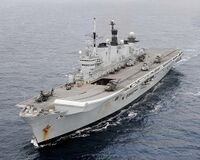 |
|
||
| Conqueror-class | Battleship | 4 | 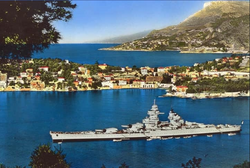 |
|
||
| Specialized Strategic Vessels | ||||||
| Leviathan-class | Strategic Cargo Submarine | 10 | 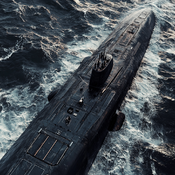 |
|
| |
| Pegasus-class | Floating Space Launch Platform | 1 |
|
| ||
| Amphibious Warfare Vessels | ||||||
| Beauharnais-class | Amphibious assault ship | 12 | 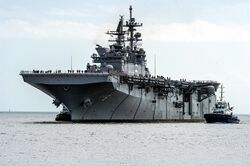 |
|
||
| Carrillo-class | Amphibious Command Ship | 4 |  |
|
||
| Ignatius-class | Amphibious Transport Dock | 8 | 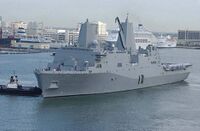 |
|
||
| Cruisers | ||||||
| Imperator-class | Arsenal ship | 8 | 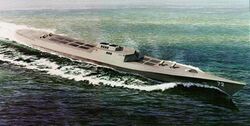 |
|
||
| Augustine-class | Missile Cruiser | 12 |  |
|
||
| Dominator-class | Missile cruiser | 18 | 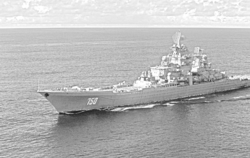 |
|
||
| Destroyers | ||||||
| Valeria-class | Destroyer | 24 | 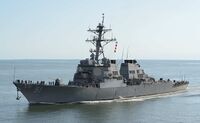 |
|
||
| Shadowstrike-class | Stealth Destroyer | 6 | 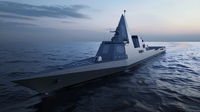 |
|
||
| Frigates and Corvettes | ||||||
| Grande Union-class | Guided-Missile Frigate | 16 |  |
|
||
| Rose-class | Corvette | 20 | 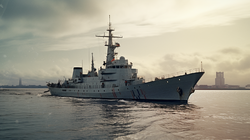 |
|
||
| Littoral and Patrol Vessels | ||||||
| Alvarenga-class | Littoral combat ship | 30 | 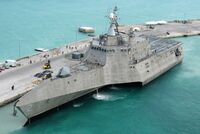 |
|
||
| Proteus-class | Modular Littoral Warship | 12 | File:Proteus-class-modular-warship.jpg |
|
||
| Napoleon-class | Maritime Security Cutter | 24 | 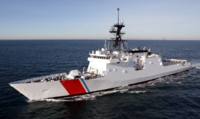 |
|
||
| Melusine II-class | Fast Attack Ship | 40 |  |
|
||
| Piriya-class | Coastal Patrol Ship | 48 | 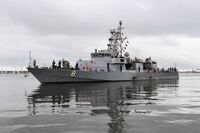 |
|
||
| Submarines | ||||||
| Tudela-class | Ballistic Missile Submarine | 4 | 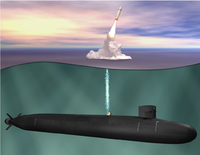 |
|
||
| Franciscania-class | Attack Submarine | 12 | 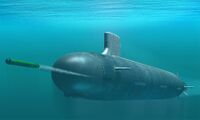 |
|
||
| Vengeance-class | Conventional Missile Submarine | 8 | File:Vengeance-class-missile-submarine.jpg |
|
||
| Phantom-class | Special Operations Submarine | 2 | File:Phantom-class-special-operations-submarine.jpg |
|
||
| Auxiliary Vessels | ||||||
| Compassion-class | Hospital Ship | 4 | 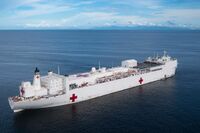 |
|
||
| Resolute-class | Fleet Oiler | 12 | 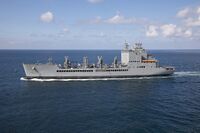 |
|
||
| Sustainer-class | Fleet Replenishment Ship | 8 | 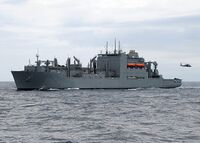 |
|
||
| Cárdenas-class | Ocean Surveillance Ship | 6 | 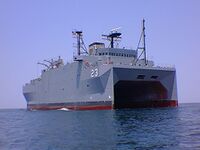 |
|
||
| Galena-class | Electronic Warfare Ship | 4 | 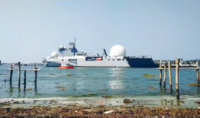 |
|
||
| Guardian-class | Anti-Mine Drone Mothership | 4 | 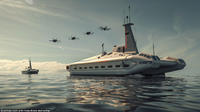 |
|
||
The Naval Expansion Programme that emerged from the Anders Defense Review of 1716 represented the most comprehensive modernization of Natopian naval forces since the founding of the nation. By 1740 AN, this methodical two-decade effort had transformed the Natopian Navy into one of Micras' most powerful maritime forces, structured around:
- Four carrier strike groups centered on Susa-class fleet carriers;
- Eight expeditionary strike groups built around Proclamation-class light carriers and Beauharnais-class amphibious assault ships;
- Multiple surface action groups composed of cruisers and destroyers;
- A robust submarine force providing both strategic deterrence and tactical capabilities;
- Revolutionary strategic transport capabilities with the Leviathan-class cargo submarines;
- Unprecedented operational flexibility through the Pegasus floating space launch platform;
- Comprehensive littoral combat and patrol capabilities protecting Natopian waters;
- Extensive auxiliary and support vessels enabling global power projection.
The Natopian Navy's unique strategic assets, particularly the revolutionary Leviathan-class strategic cargo submarines and the Pegasus-class floating space launch platform, provided unprecedented capabilities not found in any other naval force on Micras. The Leviathan-class submarines, with their ability to transport critical strategic resources beneath blockades, represented a fundamental rethinking of naval logistics, while the Pegasus platform created an entirely new paradigm for the integration of naval and space operations.
The fleet is organized into five primary operational commands:
- Gaeos Fleet (Tapfer and Yellow Island waters);
- Raynor Fleet (Eastern Hemisphere operations);
- Dominion Fleet (Global power projection and expeditionary operations);
- Subsurface Command (Submarine operations);
- Maritime Protection Force (Coastal defense and EEZ enforcement).
Natopian Spacefleet

The Spacefleet, in its present form, has been in continuous existence since 1571. Over the period of time the fleet has seen individual vessels progressively rebuilt through maintenance and life-extension programmes as well as entire classes withdrawn from service or redesigned.
The Natopian Spacefleet developed near faster-than-light travel through unknown and clandestine means. The technology was once widespread throughout the fleet when regular missions to Giess and brief visits to Daia necessitated FTL speeds. Most ships are outfitted with a traditional spacewarp, known as Vastadenu Drive, which required a mineral component that is rare on Micras but abundant on Giess. Because of Giess' disappearance, the Spacefleet has enacted a strict sublight cruising policy to preserve the minerals for critical uses only. Newer classes have a vortex jump drive which has proven to be a more stable method of transport and does not require crystals or such, albeit in the absence of a stable system of interstellar dead-reckoning which again limited the safe operability of the vortex drive to within the Atos system.
The Natopian International Space Station was built in orbit and hosted international teams of scientists, diplomats, and provided logistical support for other nation's space programs. The most notable early exchange program was with the Karnali space program, where both national space agencies built a Bismarck class ship together and launched it as the KSS Karnali. According to Natopia's law, the Spacefleet maintains organizational autonomy outside of Micras' atmosphere, which allows the NISS and any Spacefleet assets stationed there to act as necessary in the harsh realities of space. Unless re-positioned for reconnaissance or classified missions, the NISS is found in a geosynchronous orbit over Angus Spaceport with several drydock facilities nearby (relatively).
A smaller version of the NISS, Natopian Station 2, was once in orbit around Giess.
New Lindstrom Tarsica Base was created when an old style Imperial-class carrier was dissembled in lunar orbit and reassembled on the surface of Tarsica. It has not always been manned, depending on the priorities of the NDF command staff, the civilian government, and whether or not other nations have personnel on the moon. The base is currently permanently manned, and the Guinevere Dome contains the transplanted remnants of the Hazel tribe, who fled their native Flaventia after a terrible fire.
The NSS Ganymede, an Io-class cruiser, was lost in a wormhole in 1593 during a standard patrol route between Giess and Micras. That same year the AlexNat Gate suddenly reopened and an invasion of the Grand Commonwealth poured into Klaasiya on Micras. It was later discovered that both the Ganymede wormhole and AlexNat Gate had opened into the parallel mirror universe of Meekras, where neither the Grand Commonwealth nor the SPEAR alliance collapsed and waged global war for years.
The War of Lost Brothers and the ongoing War of the Harpy compelled the Natopian Spacefleet to rebuild its aerospace arm for counterinsurgency operations in Normark.
As the primary spacefaring power of the Raspur Pact, the Natopian Spacefleet has exclusive operational control of the alliance's Space Command, subordinated for administrative purposes under the Tapfer Theatre Command.
The maintenance of the spacefleet represents the single largest item cost of the Natopian Defense Force, leaving the Natopian Navy constrained to sustain its fleet through maintenance and scheduled replacement, having never made good on losses sustained during the War of Lost Brothers. Natopian land forces remained chronically underdeveloped and reliant upon being bolstered during times of crisis by the Demesne Defense Forces. This produced a paradoxical situation whereby whilst the militaries of the Raspur Pact are heavily dependent upon the orbital bombardment and surveillance capabilities of Natopia, Natopia is in turn reliant upon the contributions of allied contingents for its own geostrategic security.
Organisation
- Aerospace Command
- Spacefleet Headquarters and Spacefleet Academy
- Spacefleet
- Deep Space Patrol Group
- Atos Patrol Group
- Natopian International Space Station (NISS)
- Tarsica Support Group
- Orbital Defence Force
- 1st (Fighter) Group
- 2nd (Bombardment) Group
- 3rd (Support) Group
- 8th (Special Purposes) Group
- 5th Tactical Air Force (Tapfer)
- 4th Strike Group
- 5th Bombardment Group
- 6th Training Group (Imperial Air Training School)
- Air Development and Test Wing
- 7th Reconnaissance Group
- 9th (Neridia) Strategic Strike Group
- 10th Air Mobility Group
- 6th Tactical Air Force (Cibola)
- 13th Light Bomber Squadron (21x A-100 Kamæleon)
- No. 281 Wing
- No. 6 Squadron (24x F-10 Carnifex)
- No. 25 Squadron (24x T-4/A-4 Flecha)
- No. 37 Squadron (24x T-5/A-5 Tejón de Miel)
- No. 283 Wing
- No. 39 Squadron (24x T-4/A-4 Flecha)
- No. 213 Squadron (24x F-10 Carnifex)
- No. 351 Squadron (24x T-5/A-5 Tejón de Miel)
- No. 334 Wing
- No. 267 Squadron (24x F-10 Carnifex)
- No. 352 Squadron (24x T-4/A-4 Flecha)
- No. 1435 Squadron (24x T-5/A-5 Tejón de Miel)
- 60th Troop Carrier Group (24x Dingo-class, 360 Raven-class)
- 7th Tactical Air Force (Apollonia)
- Aerospace Commissariat Service
- Aerospace Inspectorate Service
Establishment
| Type | # in Service |
|---|---|
| Imperial-class space carrier | 1 |
| Ariadne-class escort ship | 6 |
| Bismark-class battleship | 2 |
| Damocles-class orbital bombardment platform | 3 |
| Io-class cruiser | 2 |
| Natopian International Space Station | 1 |
| Vanguard-class gun-cutter | 3 / 15 |
| New Lindstrom Tarsica Colony modular assembly | 1 |
| Virgo-class scout ship | 13 |
| Zion-class survey ship | 8 |
| Drydock facility | 1 |
| A-100 Kamæleon | 50 |
| Dingo-class shuttle | 580 |
| F-10/N-1 Carnifex | 470 |
| F-17 Axarana | 44 |
| Raven-class personal shuttle | 800 |
| T-4/A-4 Flecha | 400 |
| T-5/A-5 Tejón de Miel | 200 |
Gallery
-
Imperial-class space carrier
-
Ariadne-class escort
-
Bismarck-class battleship
-
Io-class cruiser
-
Natopian International Space Station
-
Damocles-class orbital bombardment platform
-
Dingo-class large shuttle
-
Kamæleon-class assault craft
-
F-10/N-1 Carnifex aerospace superiority fighter
-
F-17 Axarana air superiority fighter
-
HB-3 bomber
-
LB-2 bomber
-
N-2 fighter
-
Stealth fighter "Black Angel"
-
Raven-class personal shuttle
-
New Lindstrom Tarsica Colony
-
Virgo-class scout ship
-
Zion-class survey ship
-
Drydock facility
-
Natopian Station 2
Ranks and Uniforms
Uniforms
The uniforms for each branch of the Defense Force are designed by the Institute of Heraldry within the Court of the Verdant Gardens and manufactured via a contract with Dingo Enterprises. The unniforms were refreshed in 1685 to make rank and service branch more distinctive. Spacefleet uniforms are consist of dark gray shorts and sleeveless uniform shirt (for arm and leg mobility in potential zero-g situations) with silver-colored leather straps and silver accents. Navy uniforms are blue pants and long sleeve uniform shirts to protect against the elements while on deck with gold-colored leather straps and gold piping for accents. Army uniforms are dark teal with rolled up sleeves, bronze-colored leather straps, and bronze piping for accents.
Ranks are identified by the cover and harness, using a hierarchy of visual iconography based on dominant styles in the upper ranks and submissive styles in the lower ranks. Command ranks wear a cross harness and a muir cap. Senior officers wear a fireman harness and a beret. Junior officers wear a bulldog harness with a garrison cap. Enlisted service members wear no harnesses and a cadet's cap.
Standard Issue Equipment
The Thworpper

In addition to mission- and station-specific sidearms, all NDF officers and enlisted persons are issued a Thworpper for personal defense, hand to hand combat, and as a ceremonial weapon in place of a saber for dress uniforms. The Thworpper is a clack fan designed by the NDF and produced by Lindstrom Square Mercantile, based on the popular fans used in circuit parties. It features five blades and a satin fan with the Cross of Sovereignty and NDF Coat of Arms. In the closed position it can be stored in a belt holster and used as a survival knife and for one of one combat. In the open position, it can be used with a broad sweeping gesture to cut several bitches.
Ranks
| Rank Grade | Space Fleet | Navy | Army |
| OF-10 | Fleet Marshal | Grand Admiral | Field Marshal |
| OF-9 | Marshal | Admiral | General |
| OF-8 | Vice Marshal | Vice Admiral | Lieutenant-General |
| OF-7 | Sky Marshal | Rear Admiral | Major-General |
| OF-6 | Commodore | Commodore | Brigadier |
| OF-5 | Group Captain | Captain | Colonel |
| OF-4 | Wing Commander | Commander | Lieutenant-Colonel |
| OF-3 | Squadron Leader | Lieutenant Commander | Major |
| OF-2 | Flight Lieutenant | Lieutenant | Captain |
| OF-1 | Flying Officer | Midshipman | Lieutenant |
| OF0 | Pilot Officer | Ensign | Cornet |
| WO | Warrant Officer | Chief Petty Officer | Warrant Officer |
| OR-7 | Flight Sergeant | Master Petty Officer | Sergeant-Major |
| OR-6 | Chief Technician | Petty Officer | Staff Sergeant |
| OR-5 | Sergeant | Master Seaman | Sergeant |
| OR-4 | Corporal | Leading Seaman | Corporal |
| OR-3 | Senior Airman | Able Seaman | Lance-Corporal |
| OR-2 | Leading Airman | Seaman | Chosen Man |
| OR-1 | Airman | Rating | Private |
Notable officers
- Admiral Isacco Giustinianni, NDF Garrison Commander for Elijah's Rest, Allied Commander for Keltia Command.
History
- Historic reliance upon sea-power and orbital platforms
- The Natopian Navy under Elwynnese control
- Grand Commonwealth (Giess) invasion
- Problems with Calbionese pirates
- Raid on Walstadt after the death of Elijah
- Logistical support to Constancia in the Euran War
- War of Jingdaoese Immolation
- War of Vengeance against the regicide Adam
- Neutrality in domestic politics (compared to Shireroth and Jingdao)
- War of Lost Brothers
- Battle of Carama Bay
- Naval war against Passio-Corum
- War of the Harpy
- Wars of the Dispossessed
- Fourth Euran War
See also
- Gallery of historical Natopian Defense Force equipment
- Natopian Security Forces
- Western Natopian Demesnial Forces
| |||||||||||||||||||||||||||||||||||||



